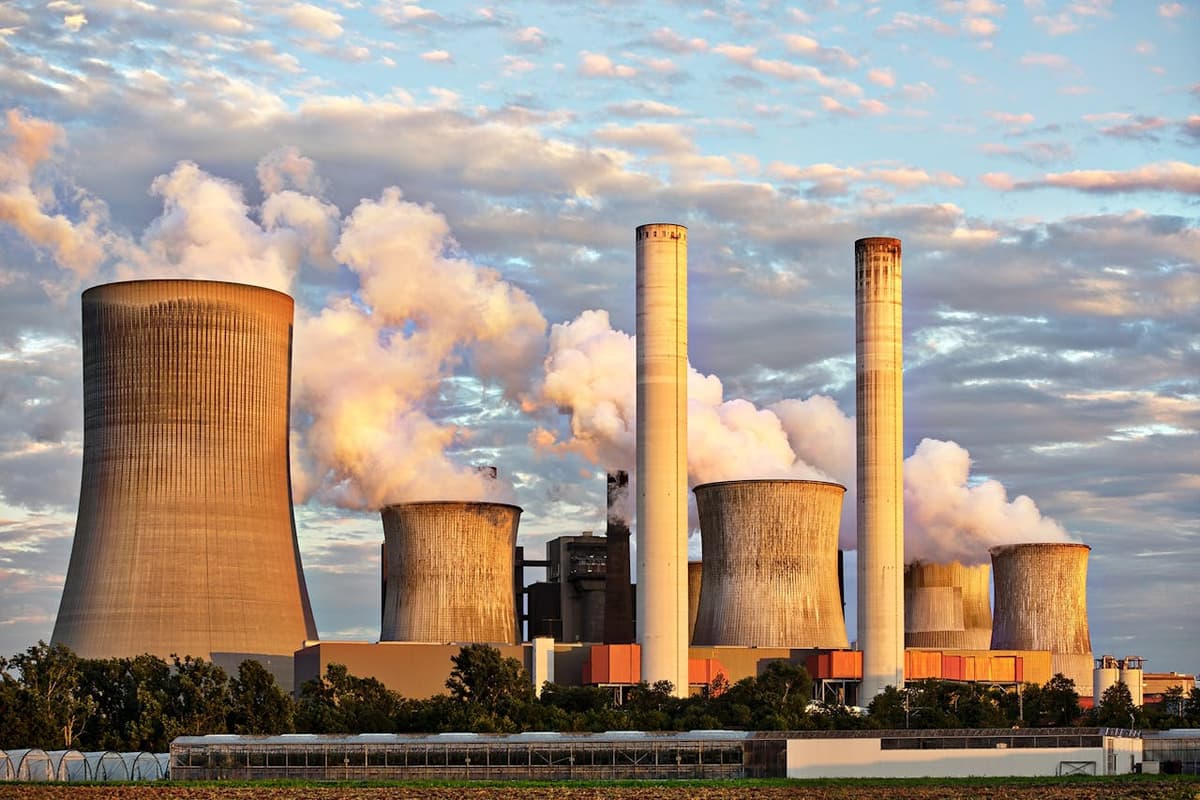Forget Three Mile Island: Energy Visionaries Plan a Fleet of Nuclear Power Stations Across America
‘We have seen a huge pivot and finally a recognition of the benefits that come from nuclear power,’ one backer says.

PITTSBURGH — What if we began looking at nuclear energy in a different way? What if those new perspectives worked and brought people from all sides of the energy equation together for the first time in a generation?
That is the genesis behind a Kentucky-based energy group, the Nuclear Company, which brought its vision on a bus to Pittsburgh, one of dozens of cities across the country the company will visit, to share its plans to build a six-gigawatt fleet of nuclear power stations in America.
The chairwoman of Women in Nuclear, Juliann Edwards, said industry leaders in energy are predicting our demands for electricity will grow at a faster clip than ever before, and there is no better time than now to discuss how nuclear energy could help America’s energy supply meet that demand.
“The Nuclear Frontier bus tour was our way to inspire, educate and mobilize public support for the development of nuclear power across America,” said Edwards, an executive with the brand-new Nuclear Company.
It makes sense for the company to begin its tour in western Pennsylvania, where just down the Ohio River at Shippingport’s Beaver County, the first commercial nuclear reactor, a full-scale atomic electric power plant, began operating in 1957.
Ms. Edwards was here at Pittsburgh with the U.S. Women in Nuclear Conference and said the choice of Pittsburgh was natural because of the nuclear energy history in the region, not just at the Shippingport plant but also because of Pittsburgh industrialist George Westinghouse’s contribution to the industry.
The legacy of Westinghouse, who commercialized the alternating current and “lit up the world” by changing the way electricity was distributed, is directly tied to the nuclear era, which originated when the company built the reactor at Shippingport. Half of the nuclear reactors in operation around the globe use Westinghouse’s technology.
Ms. Edwards said the bus tour launch is a great way to showcase the company’s operations, which place a strong emphasis on the nation’s resilience and strength, which have always been part of its energy production.
“To do this, we need to build a sense of community around the industry and educate and remind Americans of our 60-plus-year operating life of nuclear today,” Ms. Edwards said.
She added that the message is ripe now because of the rare bipartisan support for nuclear technology and the understanding that it is critically important to build more baseload, zero-carbon sources of energy.
Ms. Edwards said the fleet-scale nuclear development company uses proven and licensed technology and a design-once and build-many approach to develop coalitions across communities, regulators, and financial stakeholders. She said the goal is safe and reliable electricity at the lowest cost.
The Nuclear Company’s business approach would be to solve America’s energy appetite by having a standardized process to rethink how a nuclear infrastructure project is delivered.
The industry has a reputation for going over budget while being behind schedule, but Ms. Edwards said the vibe going forward about the industry is better than it has ever been.
It’s “positive for the first time in maybe 20 years,” she said.
“I do believe there was a fear that was primarily driven by misinformation from accidents like Three Mile Island and the media,” Ms. Edwards explained.
In March 1979, a tense situation developed at the Three Mile Island nuclear power plant just southeast of Harrisburg, Pennsylvania, when a series of pumps that held cooling water for the reactor tripped. And as art often imitates life, “The China Syndrome,” a Hollywood movie about a nuclear plant meltdown, had just been released, adding to the intensity of the situation.
That day marked the halt of the production of American nuclear plants, and the credibility of the industry evaporated for decades. It is only now, after reflection and stability in the industry, that a revival of nuclear power is being rethought as energy experts fully realize the safety and capabilities of reactors to generate electricity without carbon emissions.
“Luckily, we have seen a huge pivot and finally a recognition of the benefits that come from nuclear power,” Ms. Edwards said. “I could speak all day to the quality of life, head-of-household jobs’ stability in career, economic benefits, national security and, oh, by the way, it’s the cleanest form of baseload power the world has.”
The bus tour hit six states, including Pennsylvania and Georgia, with a stop at Washington, D.C.
“It’s almost like nuclear is the best secret that everyone is now just learning about and wants to be part of,” Ms. Edwards said. “My friend stated one time, it’s like nuclear just got invited to the prom for the first time.”
Creators.com

